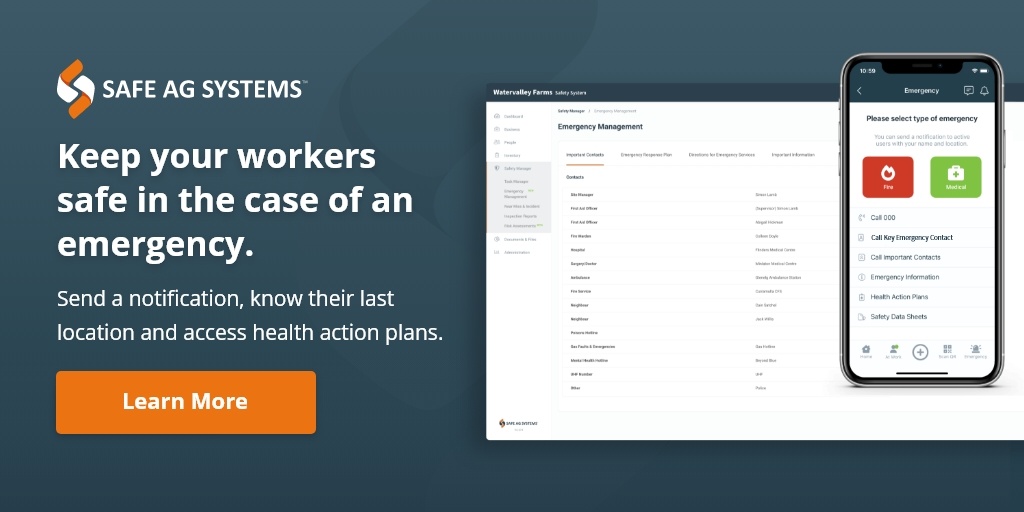A farm emergency plan cares for the safety of everyone on farm, from employees to family members and visitors. It also takes into account animals, crops, buildings and machinery depending on the emergency.
While it is good practice to prepare for an emergency on farm, it is also a legal requirement within your state's work health and safety laws to have a plan in place. Learn the difference between a natural disaster vs emergency on farm.
Employers have a legal obligation to ensure the safety of everyone on their farm and are responsible for ensuring everyone is briefed on your emergency procedure.
How do you prepare in case of an farm emergency? To prepare your emergency plan you should consider:
- risks specific to your property based on industry and location
- home building preparedness
- farm building preparedness
- animal safety, also any handling equipment
- evacuation kit
- first aid/medical emergencies
- personal safety and communication
The above can be broken down into four elements for emergency preparedness: Risk Assessments and planning, Policies and Procedures, Communication, Training and Testing. When developing your farm emergency plan have you also considered:
- Your Farm's size and location
- Any identified hazards on your property - do you have an up-to-date site map?
- What work is currently being completed
- The people who live on farm
In times of emergency on your property it is very easy to forget plans and procedures, even with prior briefings. This is when it is important to have your plan available for easy access. A basic template would include contact details, farm directions and maps, first aid kit locations, off-farm contacts, and procedures in place for various emergencies. In addition to having a plan in place, everyone on the farm should be aware of what to do in an emergency, where to access the emergency plan and first aid kit locations.
Among the emergencies you could plan for are:
- fire/bushfire
- flood
- hazardous material/chemical spill or exposure
- Confined spaces
- animal and plant disease
- extreme storm
- electrical shock
- First aid emergency (snake or spider bite, injuries, illness, heart attack)
If an emergency situation does occur, it is important to ensure you know your responsibilities when it comes to reporting these incidents for WorkCover purposes. Failure to do so can open employers up to prosecution. Planning ahead, no matter how unlikely an emergency scenario might seem, can ensure the safety of your employees and family in a high stress situation.
Useful links:
- Farmsafe.org - Emergency Preparedness
- Your local country fire service
- St John's first aid
- Australian Centre for Agricultural Health and Safety
Disclaimer: Content on this website may be of relevance to users outside of Australia, but content links and examples are specific to Australia. Please check with your local authority for your country and industry requirements.











